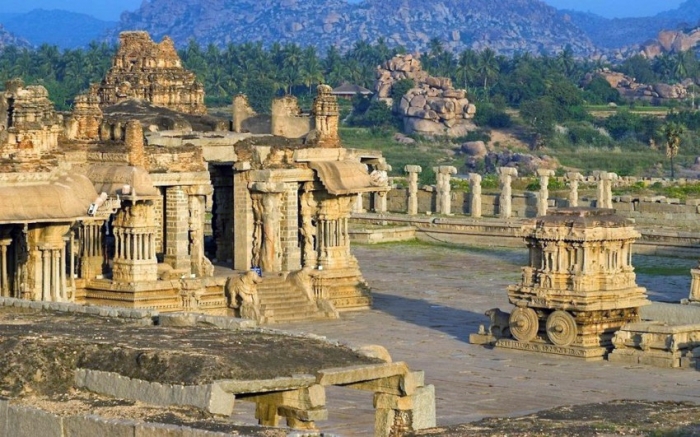Yezidis in ancient India, or Indians in ancient Mesopotamia?: Re-imagining Ancient Yezidi Origins

Mija Sanders
University of Arizona, Tucson, USA
Part 2
Ethnic and Racial Claims Amongst Yezidis
“When I came to this country in 2012 I thought I was white” Seif, a Yezidi Kurdish man told me one morning over breakfast. His wife Seve echoed the same comment, “at work everyone asked me if I was European or Russian.” For Seif and Seve, they were often racialized as European in the U.S. For Seif and Seve this was also testament to the fact that they didn’t look Arab, or “Muslim,” racially. Yezidi meant white (non-Arab), and Muslim meant Arab. “Some people in my family talk about taking DNA tests7 to find out whether we are Yezidi or Muslim. I would like to be able to prove that I am Yezidi with this test.” Seif was referring not only to the ways in which the test could prove geographic origin of DNA, but to the origin being “Caucasian” or “Arab.”8 If one was Arab, they were Muslim, according to his logic. Seif believed that all Kurds had originally been Yezidi “before Islam came to convert the Yezidis.” Seif clarified that the idea that Yezidis had a unique race from Muslim Arabs originated in the Yezidi caste system, in which Yezidis can only marry other Yezidis from the same family caste (Sheikh, Murid, or Pir). For Yezidis, marrying within the religion and the caste system is one of the most important forms of belonging. Proving that none of his relatives had procreative relationships with Arabs for centuries was very important to him. Curiously, what he did not elaborate on was his experience of difference from other “white Europeans” in America. Instead, he focused his response on the authenticity claims of his own Yezidi identity, which was the foremost form of belonging which he pursued. In the diaspora and through new forms of Yezidi nationalism, belonging became defined through racial terms. According to my interviews, some Yezidis began to shape their idea of a Yezidi “race” beyond their own caste system—through Hindu nationalist terms of “Aryan” origins as well. Notions of race travel and are shaped in the diaspora by local hierarchies. Neda Maghbouleh’s important work with the Iranian diaspora in the U.S. gives testament to complex racial categories for people of Middle Eastern descent (Maghbouleh, 2017). Discrimination against people of Middle Eastern descent in the U.S. is well documented. Iranians, Indians and Kurds who identify as Aryan do not fit into definitions of whiteness amongst the U.S, public, as demonstrated by everyday experiences in airports and interactions with border security and the public. This is most clear within right-wing groups who espouse white superiority and narrow racial definitions of what counts as “American.” Nonetheless, racial terms have been used by Yezidis and Hindus alike to concretize authenticity and origin claims to claim difference from others. Hindus in the diaspora were also pursuing authenticity claims based on the cultural norms of the homeland. Thomas describes how the Aryan claims in the right-wing Hindutva movement in India sought to prove that Hinduism is originally from India, including south India (Thomas, 2018). The purpose of this claim is to prove that counter to the Aryan migration claim, Hindus in both north and south India were always in India and not from somewhere else. The story of Aryan migration, supported by archeological evidence, is the claim that Aryans brought horses from central Asia to the Indus Valley after the decline of the Indus civilization (Thomas, 2018). Such claims were racialized by imperialist colonial era scholars who wanted to differentiate north Indians from south Indians by skin scholar, which was equated with different linguistic origins. One of the findings of colonial linguists was that Aryans (north Indians) spoke Indo-European languages, which have commonalities amongst Sanskrit, Greek, Latin, and Persian. This claim is used to prove that Muslims and Christians are outsiders became they came from somewhere else. The exception to this narrative seems to be the Yezidi mythic origin story. This is one reason why the Mir often states, “I believe the Yezidi came from India” when he is in the company of the HSS. This idea cohered with historical ideas of the Hindutva movement which believed that the Hindu religion used to take up space from India to Mesopotamia, and that the lands of the Kurds were considered Hindu as well. It was not an outsider discourse, but an insider one, meant to mark ancient origins of Hindus themselves as part of a pan-Yezidi and even pan-Zoroastrian imaginary frame (Schmidinger, 2019).
To be continued...
Tags: #yazidisinfo #yezidi #ezidi #aboutyezidi
Yezidis in ancient India, or Indians in ancient Mesopotamia?: Re-imagining Ancient Yezidi Origins

Mija Sanders
University of Arizona, Tucson, USA
Part 2
Ethnic and Racial Claims Amongst Yezidis
“When I came to this country in 2012 I thought I was white” Seif, a Yezidi Kurdish man told me one morning over breakfast. His wife Seve echoed the same comment, “at work everyone asked me if I was European or Russian.” For Seif and Seve, they were often racialized as European in the U.S. For Seif and Seve this was also testament to the fact that they didn’t look Arab, or “Muslim,” racially. Yezidi meant white (non-Arab), and Muslim meant Arab. “Some people in my family talk about taking DNA tests7 to find out whether we are Yezidi or Muslim. I would like to be able to prove that I am Yezidi with this test.” Seif was referring not only to the ways in which the test could prove geographic origin of DNA, but to the origin being “Caucasian” or “Arab.”8 If one was Arab, they were Muslim, according to his logic. Seif believed that all Kurds had originally been Yezidi “before Islam came to convert the Yezidis.” Seif clarified that the idea that Yezidis had a unique race from Muslim Arabs originated in the Yezidi caste system, in which Yezidis can only marry other Yezidis from the same family caste (Sheikh, Murid, or Pir). For Yezidis, marrying within the religion and the caste system is one of the most important forms of belonging. Proving that none of his relatives had procreative relationships with Arabs for centuries was very important to him. Curiously, what he did not elaborate on was his experience of difference from other “white Europeans” in America. Instead, he focused his response on the authenticity claims of his own Yezidi identity, which was the foremost form of belonging which he pursued. In the diaspora and through new forms of Yezidi nationalism, belonging became defined through racial terms. According to my interviews, some Yezidis began to shape their idea of a Yezidi “race” beyond their own caste system—through Hindu nationalist terms of “Aryan” origins as well. Notions of race travel and are shaped in the diaspora by local hierarchies. Neda Maghbouleh’s important work with the Iranian diaspora in the U.S. gives testament to complex racial categories for people of Middle Eastern descent (Maghbouleh, 2017). Discrimination against people of Middle Eastern descent in the U.S. is well documented. Iranians, Indians and Kurds who identify as Aryan do not fit into definitions of whiteness amongst the U.S, public, as demonstrated by everyday experiences in airports and interactions with border security and the public. This is most clear within right-wing groups who espouse white superiority and narrow racial definitions of what counts as “American.” Nonetheless, racial terms have been used by Yezidis and Hindus alike to concretize authenticity and origin claims to claim difference from others. Hindus in the diaspora were also pursuing authenticity claims based on the cultural norms of the homeland. Thomas describes how the Aryan claims in the right-wing Hindutva movement in India sought to prove that Hinduism is originally from India, including south India (Thomas, 2018). The purpose of this claim is to prove that counter to the Aryan migration claim, Hindus in both north and south India were always in India and not from somewhere else. The story of Aryan migration, supported by archeological evidence, is the claim that Aryans brought horses from central Asia to the Indus Valley after the decline of the Indus civilization (Thomas, 2018). Such claims were racialized by imperialist colonial era scholars who wanted to differentiate north Indians from south Indians by skin scholar, which was equated with different linguistic origins. One of the findings of colonial linguists was that Aryans (north Indians) spoke Indo-European languages, which have commonalities amongst Sanskrit, Greek, Latin, and Persian. This claim is used to prove that Muslims and Christians are outsiders became they came from somewhere else. The exception to this narrative seems to be the Yezidi mythic origin story. This is one reason why the Mir often states, “I believe the Yezidi came from India” when he is in the company of the HSS. This idea cohered with historical ideas of the Hindutva movement which believed that the Hindu religion used to take up space from India to Mesopotamia, and that the lands of the Kurds were considered Hindu as well. It was not an outsider discourse, but an insider one, meant to mark ancient origins of Hindus themselves as part of a pan-Yezidi and even pan-Zoroastrian imaginary frame (Schmidinger, 2019).
To be continued...
Tags: #yazidisinfo #yezidi #ezidi #aboutyezidi

























